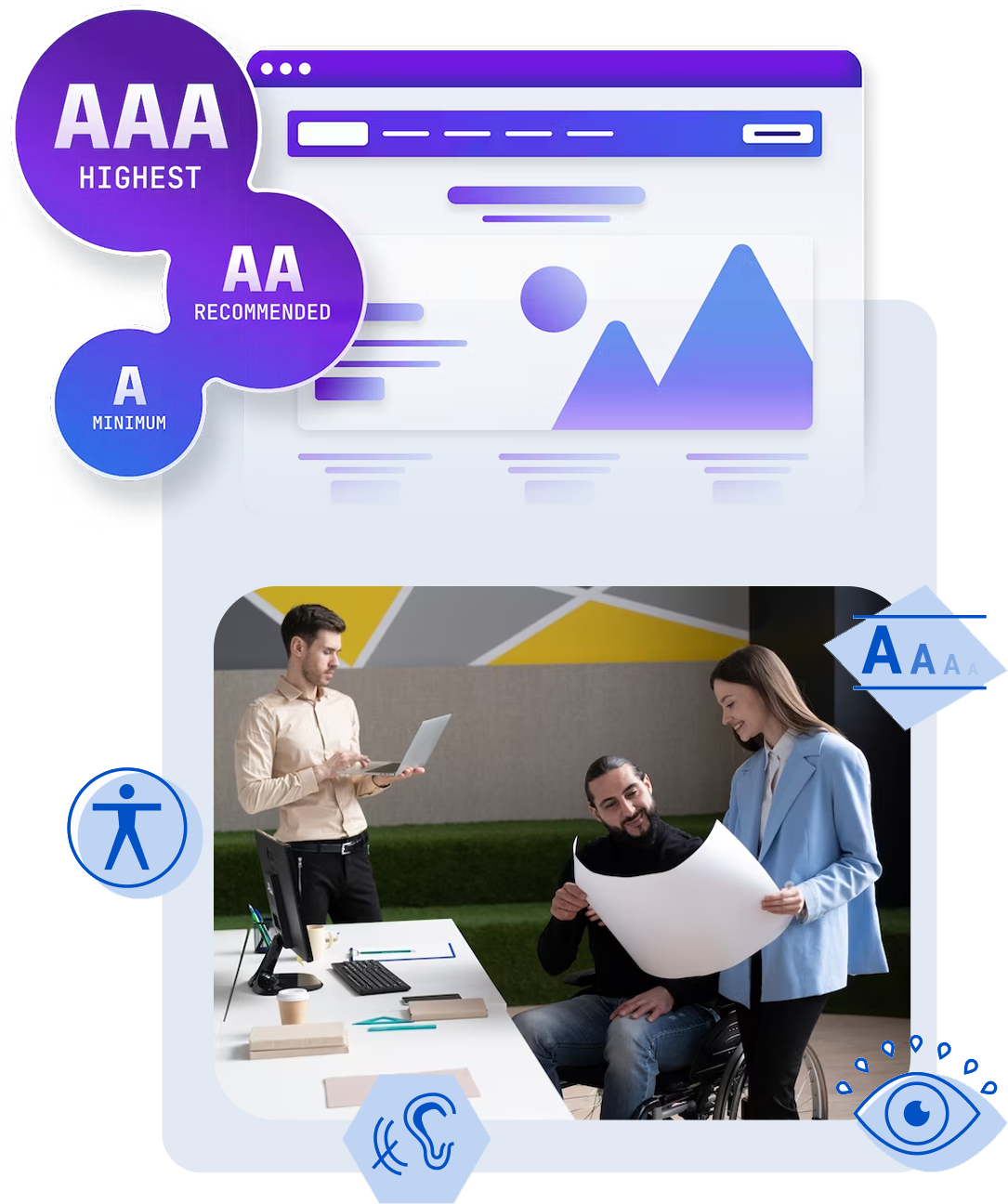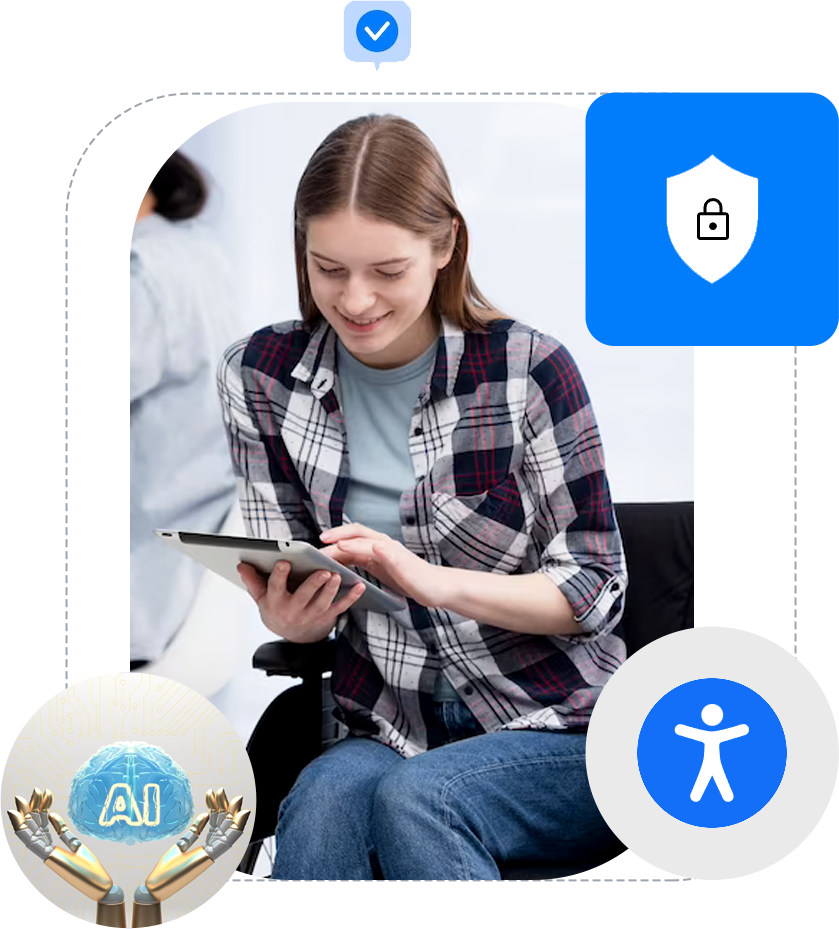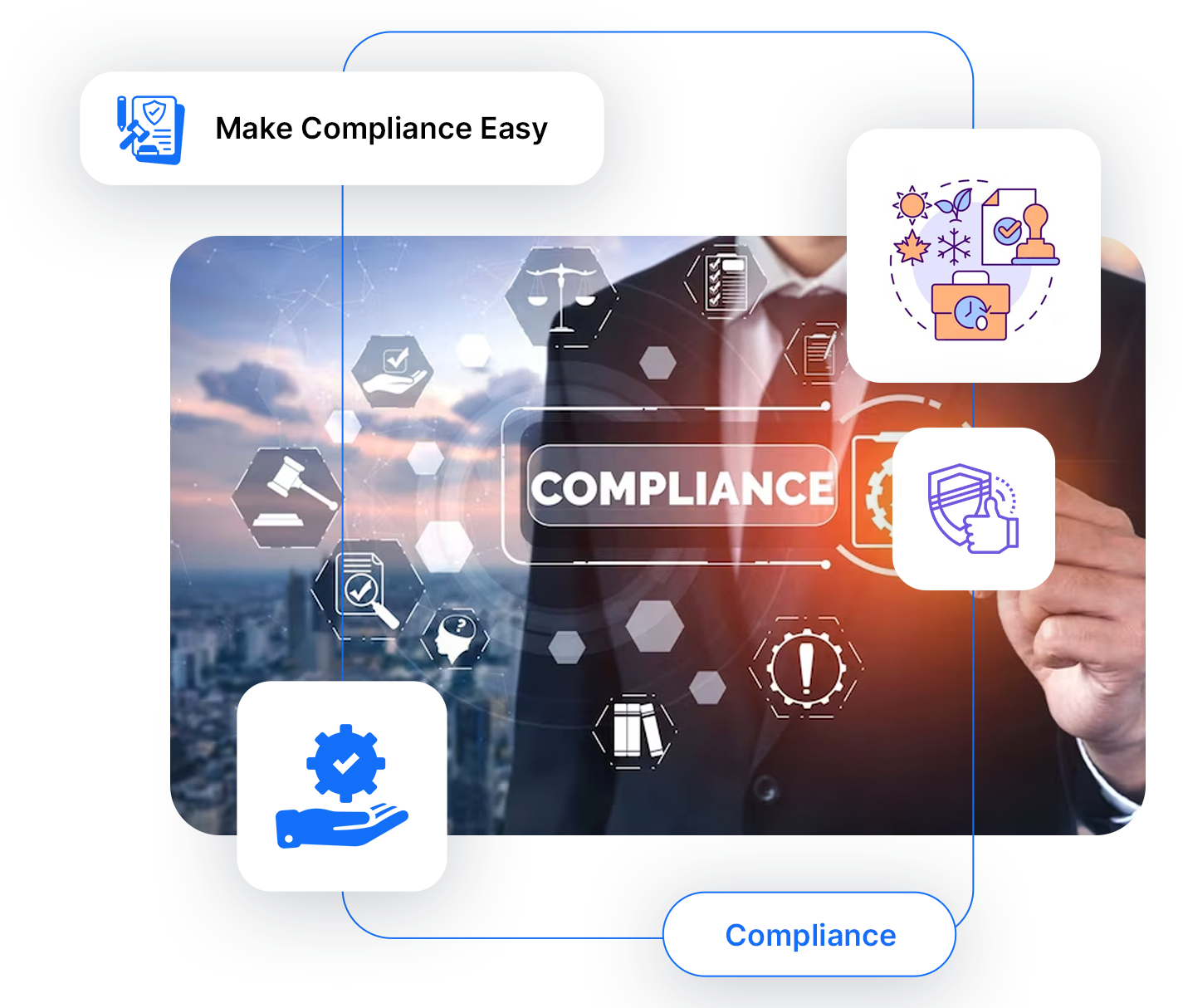Automated remediation based on a true and basic human desire to expand accessibility for all users is our
starting point. The POLODA AI Accessibility Widget contains all the rules needed to adhere to global
compliance standards and is able to scan and remediate websites to bring them up to those high levels of
compliance.
And, as compliance standards change, the widget changes with them: we constantly update it and are
continually researching new and expanded definitions of and standards for accessibility.
Without this tool, organizations are left using web developers to hand-code updates across all pages on
their
websites, which, as might be expected, is generally a time-consuming and expensive process. It also
leaves a
lot of room for errors and omissions.
POLODA AI has moved beyond basic automation to ensure strict compliance. Since almost every website
contains
some custom code, simple automation can’t interpret everything it scans. That’s why we developed an
AI-powered accessibility widget that can decipher the structure of any site. It also writes
grammatically-correct descriptions of the images it scans so screen readers can describe them to users
who
are visually impaired. No other website compliance solution is more efficient, or more cost-effective.
The speed at which a website can be made compliant is also critical with regard to litigation.
As compliance guidelines turn into compliance laws, businesses of all sizes with non-compliant websites
are
being targeted by lawsuits. This is clearly a financial liability, and, importantly, it also harms sales
numbers and downgrades the digital reputation of a company when a large percentage of site visitors
can’t
gain full access. Demonstrating the ability to quickly remediate all the pages on a site while also
being
responsive to people with disabilities is the safest way to avoid financial losses and lengthy court
cases.













